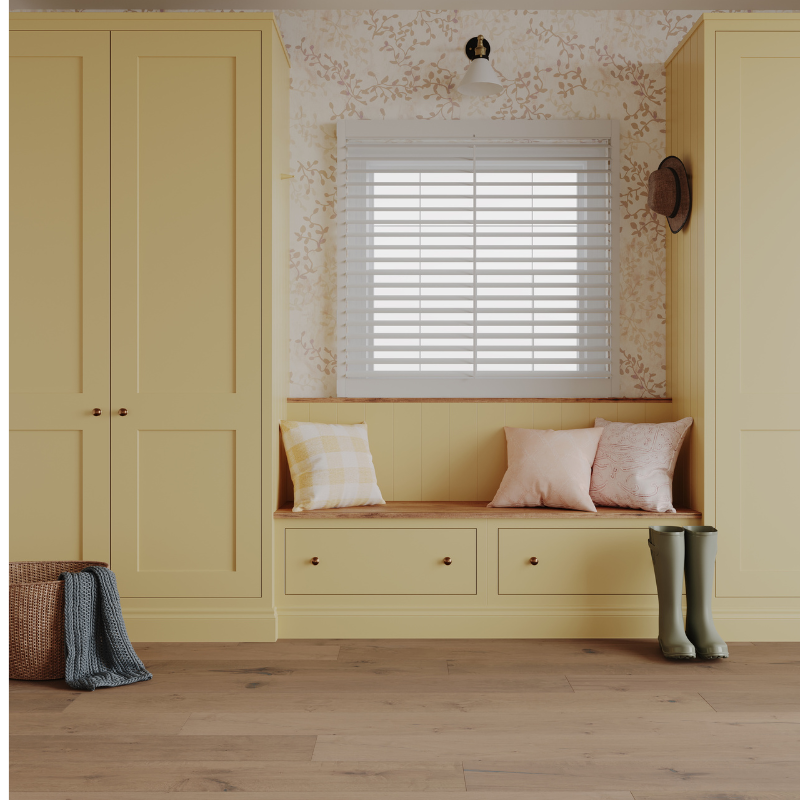What is engineered wood flooring?
Choosing the perfect flooring for your home can feel like a daunting task, with an array of options from solid wood to laminate and vinyl. Among these, engineered wood flooring has emerged as a front-runner for homeowners seeking both beauty and performance. But what exactly is it, and what makes it such a superior choice for a modern home?
At its core, engineered wood flooring is a marvel of modern timber technology. Unlike a single, solid piece of timber, an engineered plank is constructed from multiple layers. The magic lies beneath the surface: a stable core, often made from criss-crossed layers of plywood (as in ours which has a eucalyptus core) or high-density fibreboard (HDF), is topped with a beautiful, genuine layer of real hardwood (always oak at Knot & Grain.) This clever, multi-layered construction is precisely what gives engineered wood its exceptional stability and resilience.

Engineered Wood vs. Solid Wood: Stability is Key
The most significant difference between engineered wood and traditional solid hardwood lies in their reaction to environmental changes. Solid wood planks are prone to expanding and contracting with fluctuations in temperature and humidity, which can lead to gapping, cupping, or warping over time. This is why solid wood isn't always recommended for areas like basements or over underfloor heating systems.
Engineered wood, however, is designed to overcome these challenges. The cross-ply construction of its core layers creates immense stability, making it far less susceptible to movement. This enhanced stability means engineered wood is a highly versatile option, ideal for installation in almost any room, including conservatories, kitchens, and effortlessly complementing modern underfloor heating systems.
Beyond Synthetics: Engineered Wood vs. Laminate & Vinyl
While laminate and luxury vinyl tile (LVT/LVP) offer cost-effective and waterproof solutions, they simply cannot replicate the genuine warmth, texture, and inherent character of real wood.
- Laminate flooring consists of a photographic image of wood (or stone) printed onto a fibreboard core, topped with a clear protective layer. It looks like wood, but it doesn't feel like it, nor does it offer the natural grain and texture of a true timber surface.
- Vinyl flooring (including LVT/LVP) is a synthetic product, primarily made of PVC. While highly water-resistant and durable, it's an imitation. The patterns are printed, and the feel underfoot is distinctively synthetic, lacking the organic warmth and unique irregularities that make real wood so captivating.
Engineered wood, in contrast, boasts a real wood wear layer. This means you are stepping on genuine timber – feeling its unique grain, observing its natural colour variations, and enjoying the subtle aroma of wood. It's the authentic experience, marrying the aesthetic appeal of solid wood with superior functional benefits.

The Rustic Plank in colour "Daisy Chain"
Built to Last: The Longevity and Refinishing Potential
One of the most common questions we hear is about the lifespan of engineered wood flooring, and whether it offers the same long-term value as solid timber. The answer is a resounding yes! A well-maintained engineered wood floor is truly built to last for decades, becoming a timeless feature in your home.
Crucially, like solid hardwood, engineered wood flooring can be sanded and refinished when needed, giving it a renewed lease on life. This is a significant advantage over laminate and vinyl, which, once damaged or worn, generally need to be fully replaced. The ability to sand away minor imperfections, scratches, or general wear means your engineered floor can be restored to its 'as new' pristine condition, effectively extending its lifespan by many years.
The number of times an engineered floor can be sanded depends directly on the thickness of its real wood veneer. A thicker veneer allows for more sanding cycles, offering decades of potential restoration. Even our thinner veneers (like the 3mm option) are robust enough to be sanded multiple times, which is often more than sufficient for a floor's typical lifetime, especially in residential settings.
The Undeniable Benefits of Engineered Wood Flooring
Choosing engineered wood flooring for your home brings a host of advantages:
- Superior Stability & Durability: Its multi-layered construction makes it incredibly stable, resisting changes due to humidity and temperature, leading to less warping and gapping. It's built to withstand the demands of busy family life for decades.
- Versatile Installation: Unlike solid wood, engineered flooring can be installed in basements, over concrete slabs, and perfectly integrates with underfloor heating systems, making it suitable for almost any room in your home.
- Authentic Real Wood Beauty: With a genuine hardwood top layer, you get the unparalleled look, feel, and natural character of real wood, adding warmth and timeless elegance that synthetic alternatives simply can't match.
- Eco-Friendly Choice: Engineered wood uses less slow-growing hardwood than solid wood, making it a more sustainable and responsible option. Many engineered floors, like ours, use sustainably sourced timber, reflecting a commitment to environmental care.
- Excellent Resale Value: Homebuyers consistently view real wood flooring as a premium feature. Investing in engineered wood can significantly enhance your home's appeal and potentially increase its market value, offering a strong return on investment.
In summary, engineered wood flooring offers a compelling blend of genuine natural beauty, exceptional stability, and practical versatility. It stands as a premium, durable, and more sustainable alternative to solid wood, and a vastly more authentic and aesthetically superior option than laminate or vinyl. For a floor that truly enhances your home, both now and in the future, engineered wood is an unparalleled choice.



